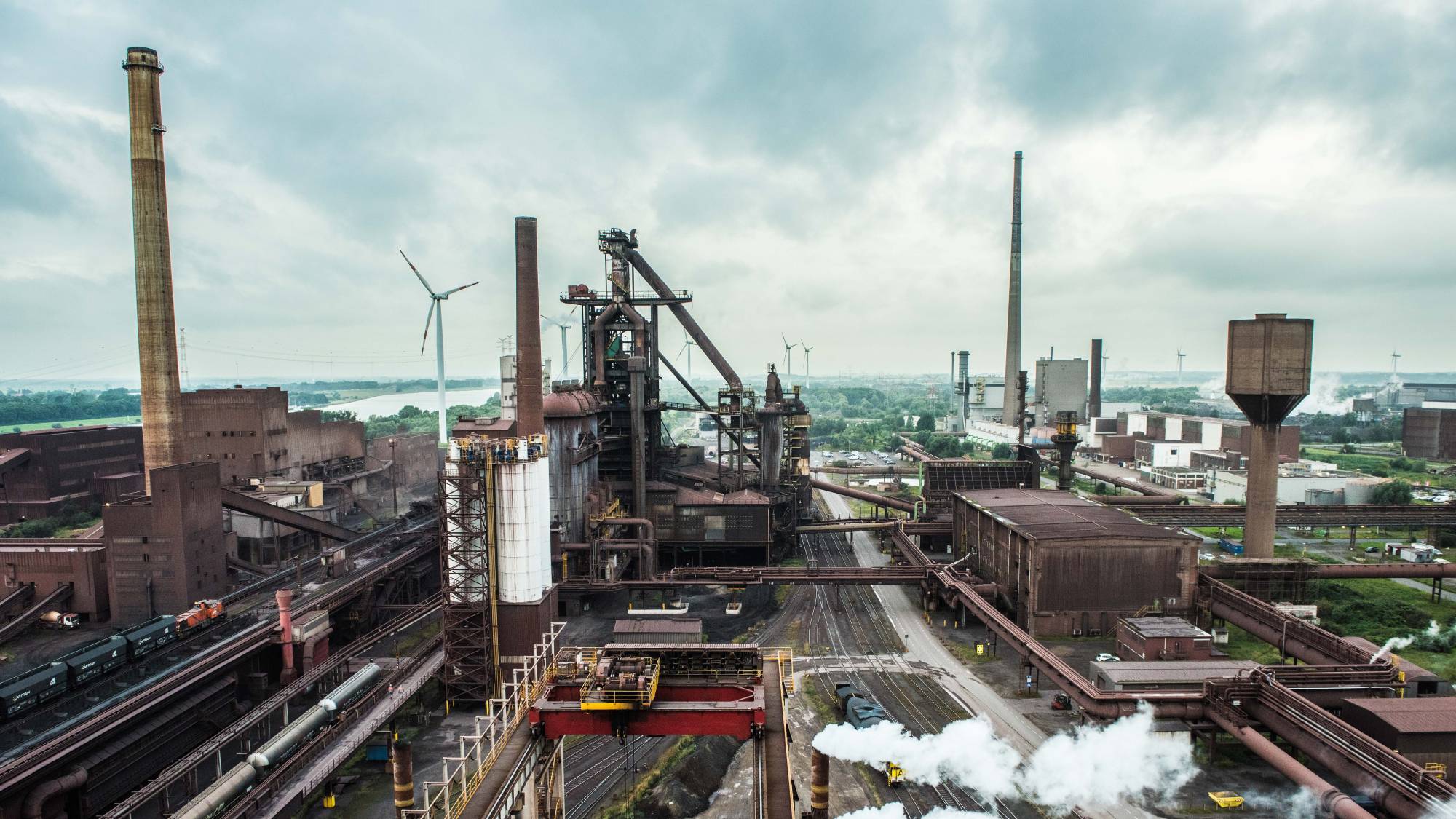
© Arcelor Mittal – Kerstin Rolfes
Rethinking Energy
The hyBit project wants to transform the hydrogen industry, with a focus on Bremen’s industrial port
The transition to a clean energy system is not only about technical solutions, but also about the wider acceptance of these solutions in society. The Bremen Research Center for Energy Systems (BEST) promotes both. One example is the hyBit project. The project wants to transform the hydrogen economy in northern Germany, with a focus on Bremen’s industrial port. The city’s largest CO2 emitter, the ArcelorMittal steelworks, is located there.
The rectangular boxes on the wall of Prof. Dr. Johanna Myrzik’s laboratory hint at the challenges ahead. They are inverters converting electricity from photovoltaic panels or balcony power plants into the alternating current used in the grid. Until recently, a small number of centralized power plants ensured our supply of electricity. In the future, this supply will be decentralized and fluctuating, due to the many different renewable energy sources. What would be the effect on power grids if every roof had its own photovoltaic system? How can grid stability be guaranteed? “We can model this in our Smart Grid lab,” explains Johanna Myrzik.
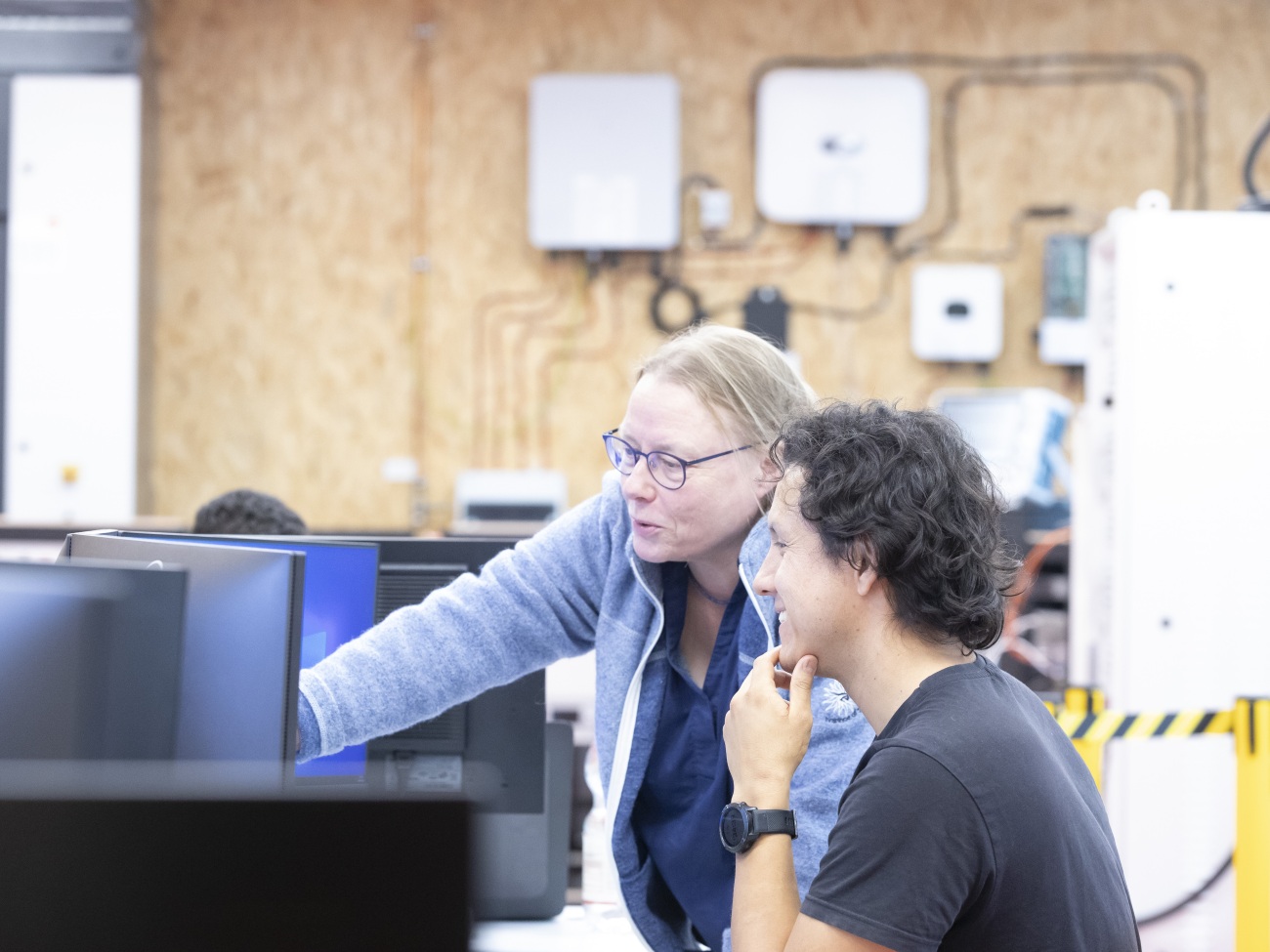
© Jens Lehmkühler / U Bremen Research Alliance
The head of the Institute of Automation Technology at the University of Bremen speaks of a paradigm shift, a completely new approach to energy that requires a new, holistic way of thinking. This new way of thinking is represented by BEST, the university’s interdisciplinary Bremen Research Center for Energy Systems established in 2022. Myrzik acts as the center’s spokesperson.
“Energy systems are becoming increasingly flexible, which is causing both technical and social changes. This is associated with uncertainties and fears that need to be addressed.”Prof. Dr. Johanna Myrzik
This research center, which is funded by Bremen State, unites engineers, mathematicians, and physicists, as well as legal, social, and economic scholars from the University of Bremen. It also includes members of other U Bremen Research Alliance institutes, such as the Fraunhofer Institute for Manufacturing Technology and Advanced Materials IFAM and the Leibniz Institute for Materials Engineering (IWT), through cooperation professorships. The primary objective of the association is to consolidate knowledge, establish solutions, augment the visibility of energy research, procure resources for research, and enhance the training of early-career researchers. Its guiding principle is to provide energy for the economy and society.
“Energy systems are becoming increasingly flexible, which is causing both technical and social changes. This is associated with uncertainties and fears that need to be addressed,” emphasizes Prof. Myrzik. “The best technical solution might have a great potential for implementation, but if it is not embraced by the public and does not resonate with people, then we may as well give up now,” adds Dr. Torben Stührmann – and recalls the discussions about funding for heat pumps.
Stührmann, head of the Resilient Energy Systems working group at the University of Bremen, was instrumental in BEST’s greatest success to date: the hyBit project. The German Federal Ministry of Education and Research is providing 32 million euros in funding for a project that focuses on the ArcelorMittal steelworks in Bremen’s industrial port, which, with more than 3,000 employees, is one of Bremen State’s largest employers. The plant emits six million tons of CO2 per year, which accounts for about half of Bremen’s annual emissions.
There is a huge demand for hydrogen as we move towards carbon neutrality. The Hydrogen for Bremen’s Industrial Transformation project, or hyBit for short, focuses on determining what technical, legal, economic, and ecological prerequisites are needed for developing a hydrogen hub in the industrial port with 50 different companies from a wide range of sectors, and how Bremen’s environmental goals can be achieved.
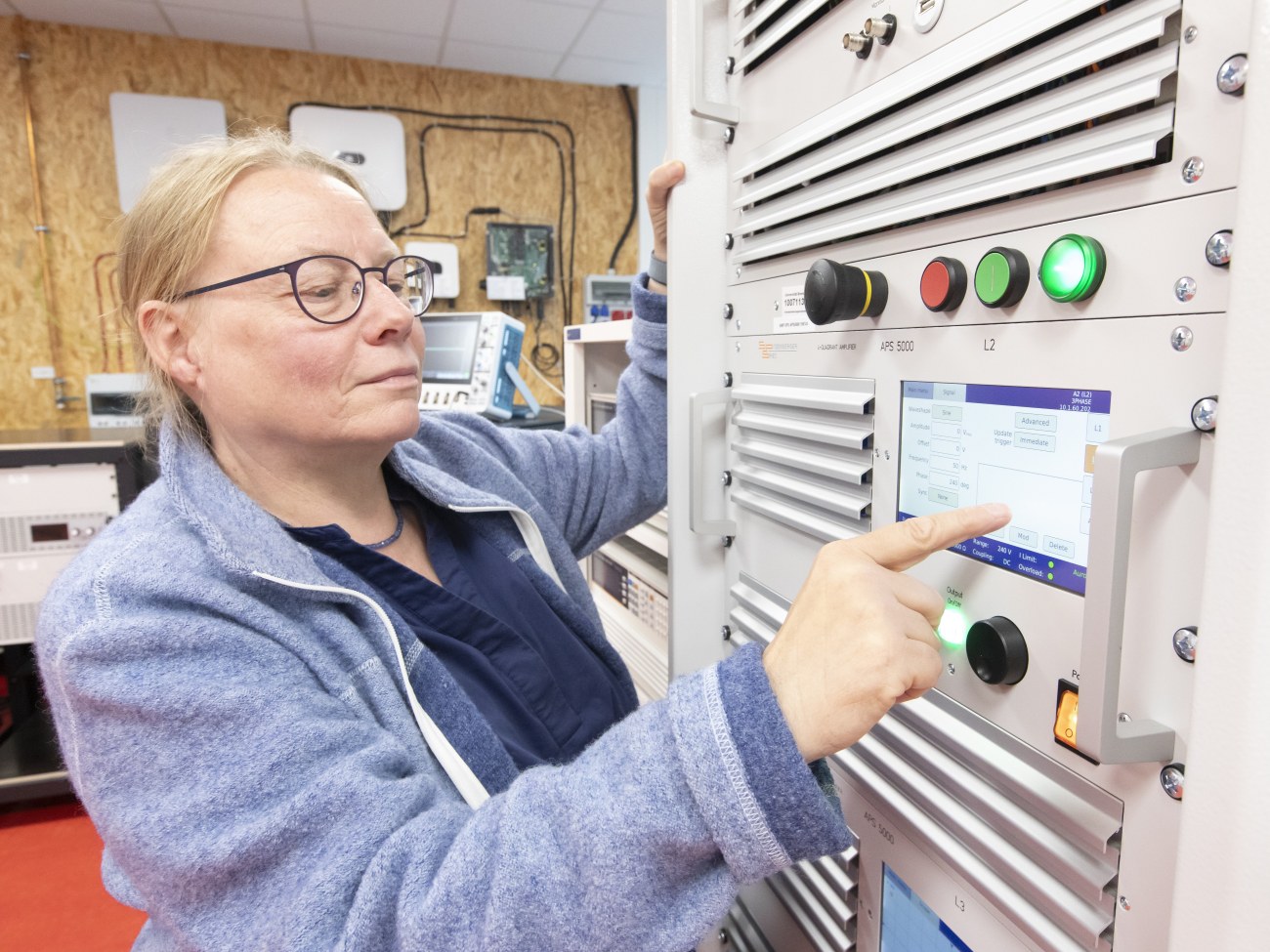
© Jens Lehmkühler / U Bremen Research Alliance
Hydrogen is the engine of change. The steel industry is one of the first to tackle the transition from coal and natural gas to green hydrogen produced from wind or water power. However, hyBit also aims to drive the development of a northern German hydrogen economy, with hydrogen hubs serving as a catalyst for its development in the region. Bremen’s industrial port with the steel plant is the heart of such a hub, where the production, distribution, and use of hydrogen are going to be combined.
Five key research areas have been defined by the project consortium, which includes 19 partners from industry and academia throughout Germany. Among these are three member institutions of the U Bremen Research Alliance – the University of Bremen, the German Research Center for Artificial Intelligence (DFKI), and the Fraunhofer IFAM. The consortium is led by Stührmann, and no less than ten research groups from various disciplines at the university are involved in hyBit.
Research topics include the development of zero-carbon logistics, the establishment of infrastructures for the transport of electricity, heat, and hydrogen, and strategies for the use of electrolyzers that convert water into hydrogen. Fraunhofer IFAM specializes in the production, storage, and transport of hydrogen. The DFKI is involved in hyBit with modeling and social simulation of the transformation processes, including issues of energy demand, consumption, and mobility.
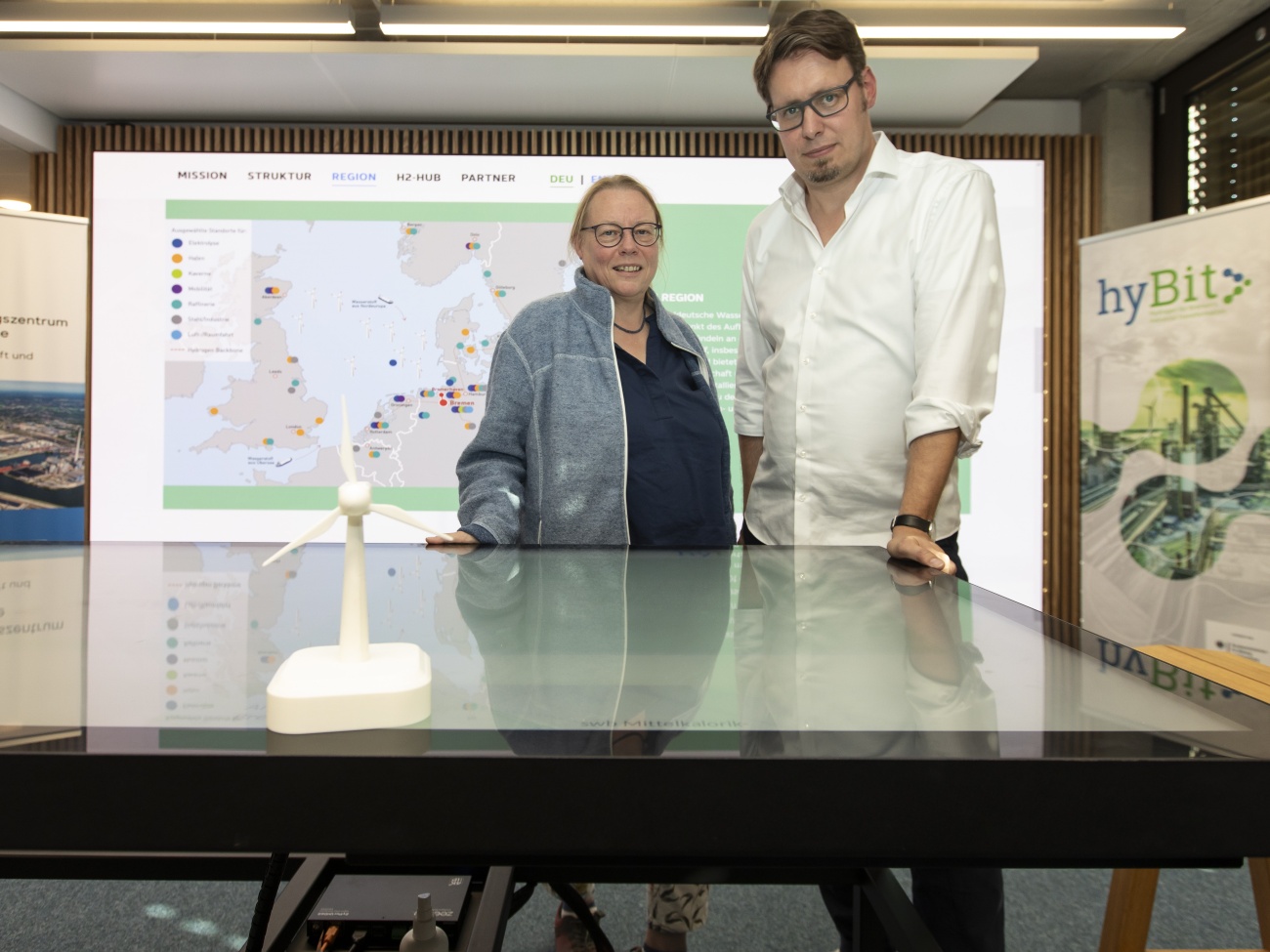
© Jens Lehmkühler / U Bremen Research Alliance
All of these processes, data, measurements, and research results are to be bundled, evaluated, and made visible in a transformation platform. The space where this happens is called the Virtual Transformation Lab. It features an interactive planning table and a giant video wall. “This is where we want to discuss and design new solutions directly with all stakeholders on the basis of the data we have collected,” Stührmann explains.
He estimates that it will take 15 to 20 years to transform the industrial infrastructure in Bremen’s industrial port and in northern Germany. In the industrial port, for example, the project is also investigating new ways of linking the electricity, heating, and mobility sectors, ultimately to ensure the security and stability of the energy system. “If we want the green energy transition to be a success, these sectors must work together,” the scientist emphasizes.
“We want to use data and models to discuss the transformation process with everyone involved. We can only succeed if we work together.” Dr. Torben Stührmann
Overcoming technical challenges and finding solutions is one thing, but ensuring that they are accepted by the local public is quite another. Both the production of hydrogen and green steel emit heat. “The new infrastructure in the industrial port has created a unique opportunity to make the best possible use of the waste heat,” Stührmann states – for example, by supplying individual districts of the city using heating networks. “This will only work with the approval of the citizens. We want to involve them,” emphasizes Stührmann. He wants to create trust and understanding through a dialogue involving the authorities, heating cooperatives, and the swb energy supplier. “We can only shape the transformation process successfully by working together.”
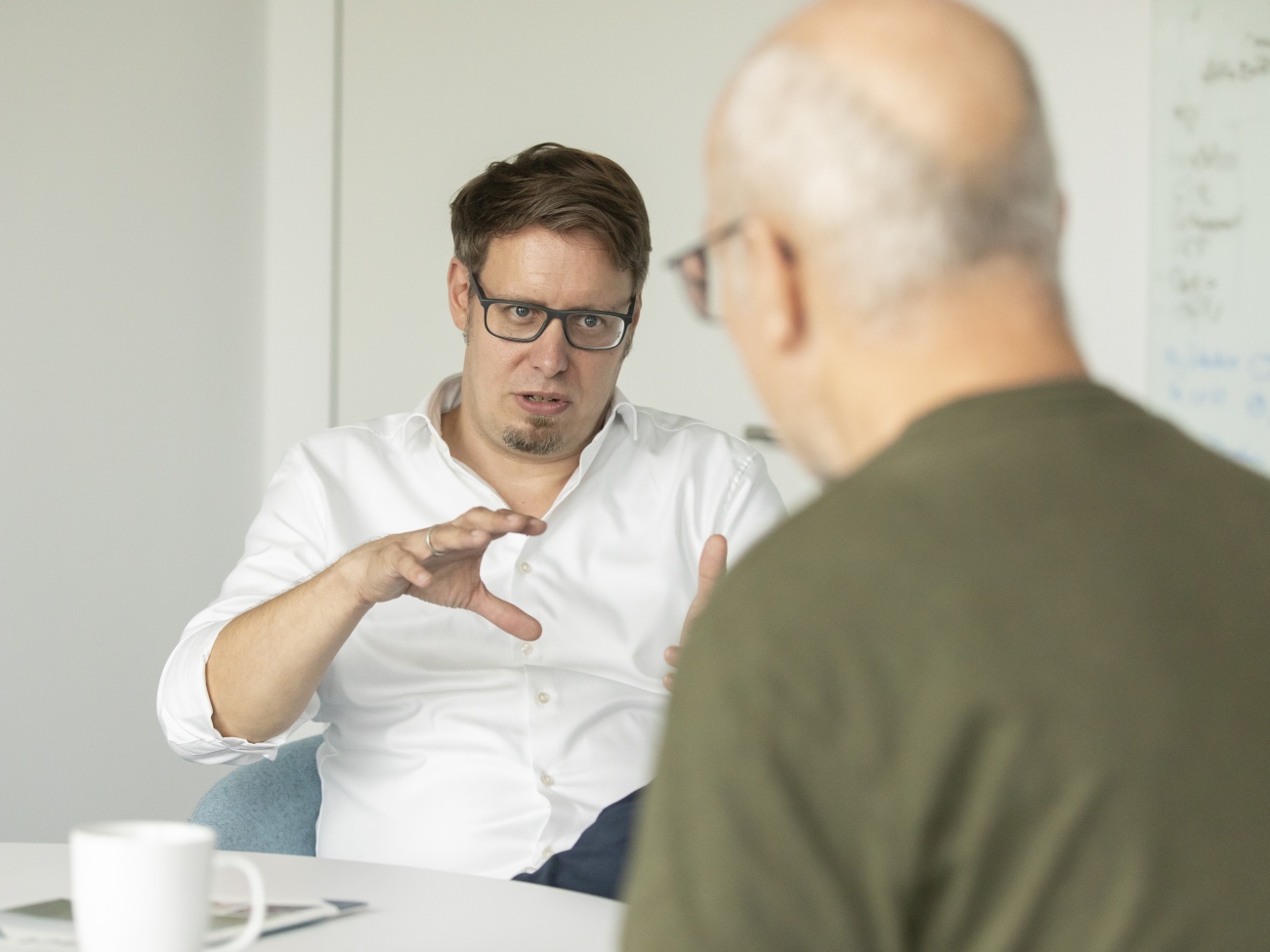
© Jens Lehmkühler / U Bremen Research Alliance
“BEST and a project like hyBit further increase the visibility of our energy expertise.” Prof. Dr. Johanna Myrzik
“Bremen is ideally positioned to establish a successful hydrogen economy,” adds Johanna Myrzik. The city benefits from nearby offshore wind farms, onshore capacity in the surrounding area, a port, logistics industry, access to the European electricity infrastructure, and an excellent research community. “BEST and a project like hyBit further increase the visibility of our energy expertise,” says the professor of automation technology, who worked at the Technical University of Dortmund before relocating to Bremen in 2018. Like Stührmann, she particularly appreciates the university’s commitment to sustainability and the opportunities for interdisciplinary collaboration, such as within the U Bremen Research Alliance.
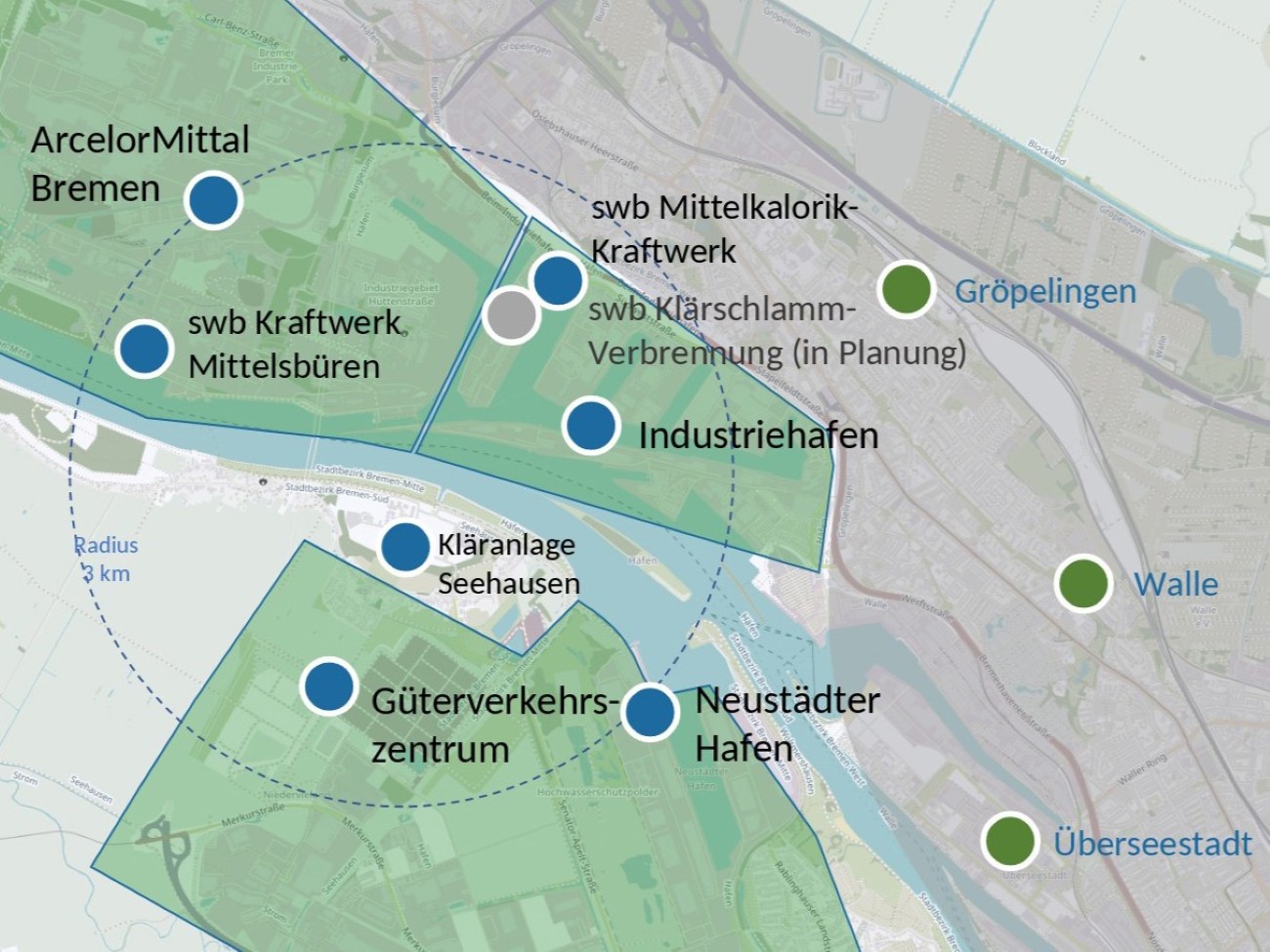
© BEST
BEST also wants to strengthen the training of early-career academics through an interdisciplinary lecture series and the further development of doctoral training. There are also plans to set up an energy laboratory on the Bremen campus, which will network and expand existing facilities on campus. To this end, Johanna Myrzik’s Smart Grid laboratory will be expanded to include an electrolyzer and battery storage. The scientist has just received approval for this project.
About the hyBit project
BESTVILLE
The project is going to be a living experimental field for sustainable urban energy systems, open to all interested parties as a place of learning and research. In spring 2025, the BESTVILLE Tiny House Village will open, featuring energy-interacting tiny houses that also serve as a community workshop and temporary residence. The goal is to foster a deeper understanding of complex energy systems and their resilient design, to develop innovative solutions, and to make them a source of learning for a wide range of target groups. Each house will represent a different topic. The main location of BESTVILLE is near the technology park, but all the tiny houses are mobile and can be relocated to other parts of the city.
Further Information about the BESTVILLE project
This article comes from Impact – The U Bremen Research Alliance science magazine
The University of Bremen and twelve non-university research institutes financed by the federal government cooperate within then the U Bremen Research Alliance. The joint work spans across four high-profile areas literally from “the deep sea into space.” Biannually, Impact science magazine (in German) provides an exciting insight into the effects of cooperative research in Bremen.